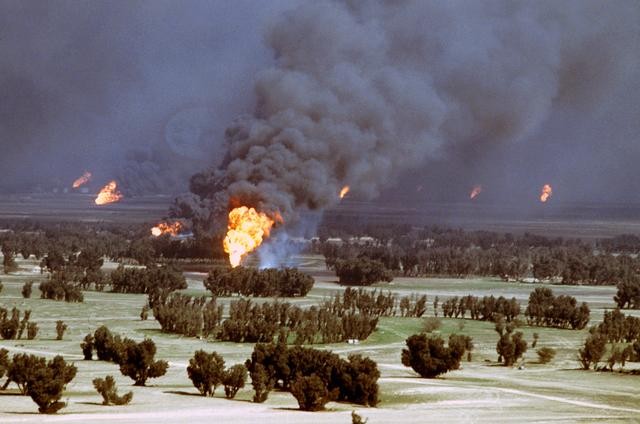What is War And How Many Conflicts in the World Today - Countries Currently At War
| Table of Contents |
What is War
War is generally defined as violent conflict between states or nations.
Defining War
Merriam-Webster Dictionary describes war as “a state of usually open and declared armed hostile conflict between states or nations.”
Stanford Encyclopedia of Philosophy states, “war should be understood as an actual, intentional and widespread armed conflict between political communities.”
On the first page of On War, Carl von Clausewitz defines war as “an act of force to compel our enemy to do our will.”
Most would agree that these are understandable and accurate definitions in the general context of what the average person thinks when they hear the word war.
However, from the strategic perspective, these definitions are arguably too simplistic to convey the complexity of war and the many facets which contribute to national success in the international arena.
Today’s strategic leaders need to conceptualize and define war in a broader perspective, and the following analysis will attempt to do so by offering an expansive definition for the term war. This new definition encompasses three attributes: the complex characteristics and nuances of war fought in a global society, a broader interpretation of who engages (or should be engaged) in war, as well as how wars may be fought and won in the future.
Reasons of War
Numerous factors lead nations to go to war. It has been stated that a country will go to war if it believes the advantages of the conflict outweigh the drawbacks and if no other amicable resolution exists. More precisely, there have been those who contend that political, religious, and economic factors predominate in the motivations behind wars. Some have asserted that ideological motivations drive the majority of modern conflicts.
The president is the commander-in-chief of the armed forces and has the authority to carry out a war once it has been declared, even though Congress has the official authority to declare war in the United States. The president has frequently employed military action without issuing a declaration of war.
There is a belief in Western tradition that there must be justifications for war. Although this concept predates antiquity, it can be most clearly linked to the writings of Saint Augustine and Saint Thomas Aquinas. They made an effort to defend war and make it compatible with the Christian view that taking another person's life is immoral.
Once the justifications for starting a war have been established, the conduct of that war, or "jus in bello," must also be just. In a war, one must act justly by being precise and proportionate. That is, it is forbidden to intentionally target civilians or noncombatants. Furthermore, harms must be commensurate with the objective pursued and only necessary force may be used.
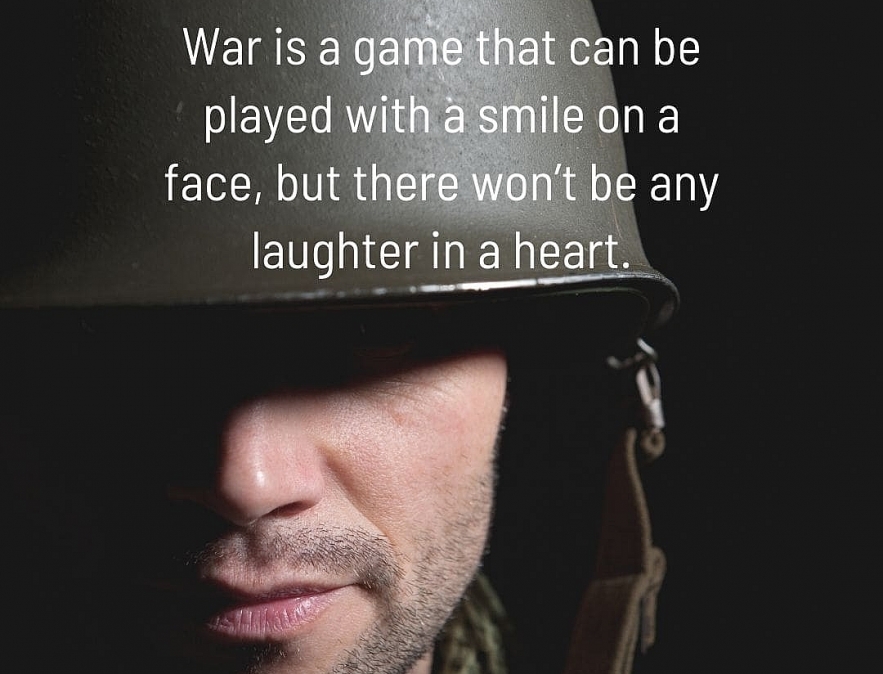 |
| Where are there wars and conficts in the world right now? |
| Reasons for going to war—jus ad bellum—are just if (1) war is declared by an appropriate authority, (2) the war is fought for a just cause, and (3) the war is fought with just intentions. An appropriate authority is a legitimate, governing authority. A "just cause" could be self-defense or a response to injustice. "Just intentions" imply that it must not be fought for self-interest, but rather for justice or the common good. In addition, (4) there must be a reasonable chance of success; (5) the benefits must outweigh the drawbacks; and (6) war must be a last resort. |
Law of War
A few of the just war theories have found their way into international treaties and the law of war, or international law, which governs the use of force, the conduct of hostilities, and the defense of war casualties.
One set of international treaties intended to safeguard civilians, noncombatants, and prisoners of war is the Geneva Conventions. Between 1864 and 1977, the treaties were negotiated in Geneva, Switzerland.
Sick and injured sailors and soldiers are covered by the First and Second Geneva Conventions. They include provisions for the protection of medical staff, ambulances, and sick and injured people.
Prisoners of war are covered by the Third Geneva Convention, and residents of occupied territories are covered by the Fourth Geneva Convention. Humane treatment of prisoners, including sufficient food and water, is mandated by the Third Convention.
The Fourth Convention contains provisions pertaining to hospitals and medical care, as well as prohibitions against torture and hostage-taking.
War Today and How War End
Many people would argue that the September 11, 2001 terrorist attacks on the United States changed the course of history, and for most Americans, this was undoubtedly the case. No longer was terrorism something that happened in Berlin discos or at bus stops in Israel.
For America, the world of terrorism took on a tangible form. It cemented in the minds of Americans the possibility of both state-on-state and non-state actors engaging in warfare. This distinction matters when considering the conventional wisdom that states fought each other in wars (or city-states in the case of the Peloponnesian War). It also casts doubt on the idea that war is controlled by some kind of decorum or legal code, wherein the parties to the conflict agree to fight using certain restrictions and exclusions; whether or not the fighters have adhered to this agreement is a different matter entirely.
There was a certain amount of restraint, from the Clausewitzian era's combat operations to the formal rule of law and Geneva Conventions that nation-states operate under today. The prevalence of terrorism and violent aggression by non-state actors forces strategic leaders to reconsider both the definition of war and its traditional features.
As the Global War on Terrorism has demonstrated, war is no longer confined to "conflict between states or nations" or fought only between political communities.
The definition that has been put forth suggests that the spectrum of war has no "end." Thus, the following would be the response to the query, "How does war end?"They don't, but this response would only be mildly satisfying.
"How does armed conflict end?" would be a more direct question.
In this instance, the response that follows is when there is adequate adherence to the national will. The idea encourages both nation-states and non-state actors to specify the goals of armed conflict as well as the steps or occurrences that must take place to put an end to hostilities. While this may seem a little simplistic, adopting this strategy could have real advantages. Internally, by making the goals clear to all entities, this advances the idea of "one voice." From the outside, it gives the opposition a direct route to peace while allowing for adjustments through talks, the conduct of war, and the escalation and de-escalation of hostilities.
Today, war is a continuum of engagement aimed at reducing the dissonance between a nation's will and that of other state and non-state actors, rather than a discrete act of armed conflict. Nation-states and non-state actors use every tool at their disposal to enforce their will during a war, including military force, information operations, economic influence (including that of multinational corporations and non-governmental organizations), social influence, and educational influence. Since these conflicts never end, it is preferable to enforce one's will and keep national goals in line with those of the international community to the extent that adherence to these goals is deemed acceptable.
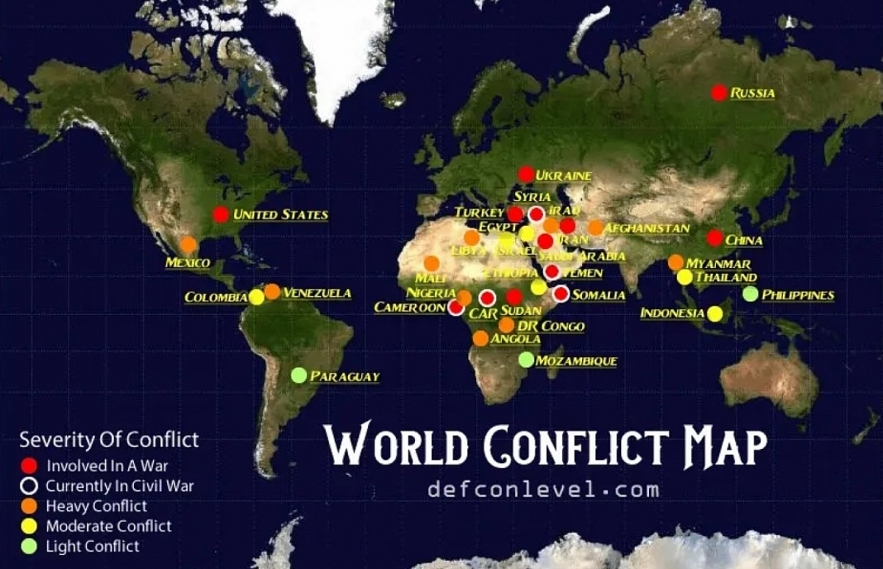 |
| What is war? Wars and Conflicts in the World Today |
War and Peace
Even though there are conflicts nowadays, there have been fewer violent deaths and war fatalities over time. For instance, from 1946 to 2016, battle death rates in state-based conflicts decreased dramatically.
The UN claims that while the number of battle-related deaths has been declining, the number of conflicts that have occurred recently has actually increased (they have just remained less deadly). Non-state actors, such as political militias and organized crime groups, have fought in the majority of conflicts.
The UN found that the most common causes of conflict today are:
-Regional tensions
-Breakdowns in the rule of law
-Co-opted or absent state institutions
-Illicit economic gain
-Scarcity of resources exacerbated by climate change
Although traditional international conflict and deaths from it are waning, there is still a very real risk of violence. Many nations are aware of this, which is why they keep increasing their armies and spending large sums of money on defense and the military.
Where Are There Conflicts In the World Today?
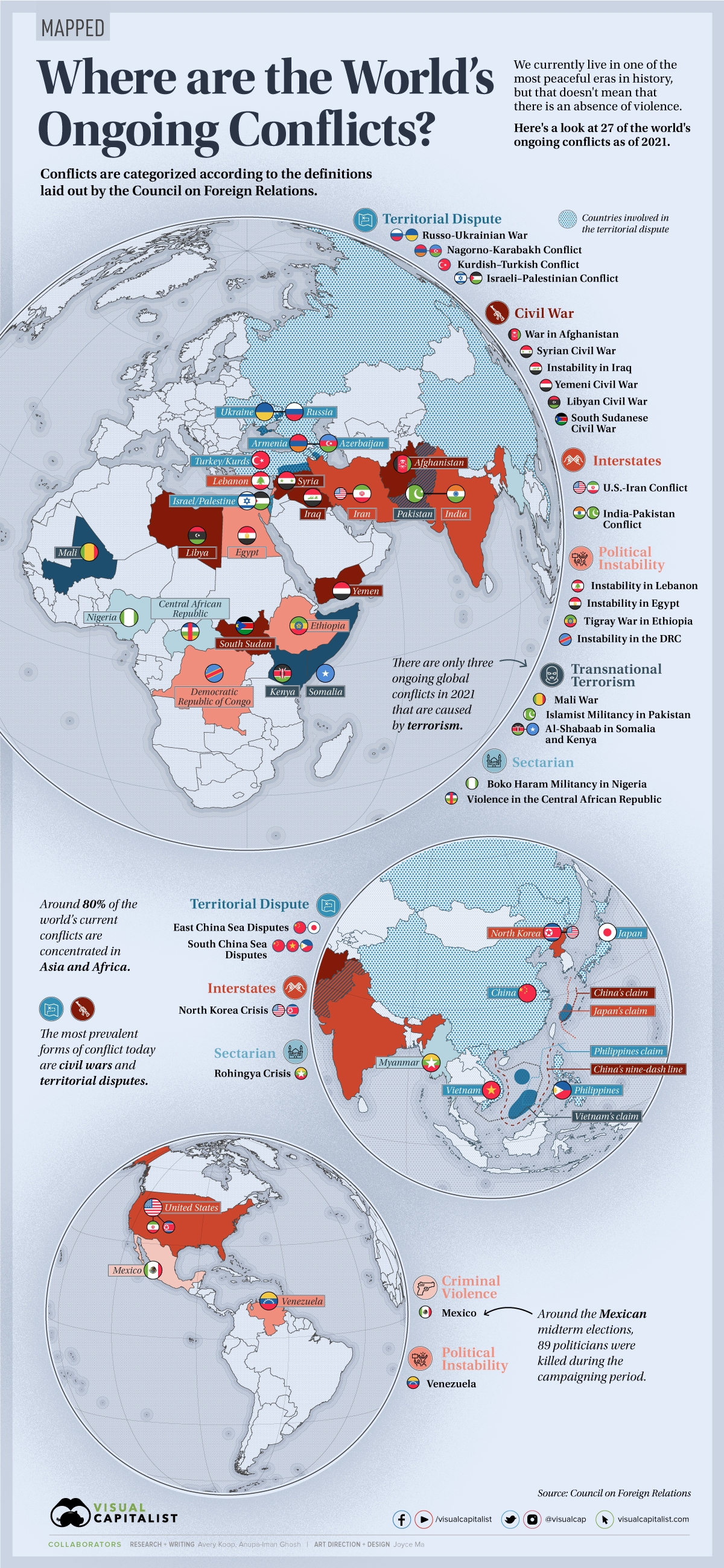 |
| How Many Wars and Conflict around the World Today? Source Design: Visualcapitalist.com |
Compared to most of history, we live in a relatively peaceful time, but that does not mean that conflicts still exist in the world today.
The locations and types of the 27 active conflicts in the world today are shown on this map, which was created using information from the Council on Foreign Relations (CFR). Nevertheless, the most recent data from CFR does not show a conflict between Russia and Ukraine.
List of Wars from Around the World Right Now
| Conflict Name | Type | Countries Involved |
|---|---|---|
| Civil War in South Sudan | Civil War | South Sudan |
| War in Yemen | Civil War | Yemen |
| Civil War in Libya | Civil War | Libya |
| War in Afghanistan | Civil War | Afghanistan |
| Civil War in Syria | Civil War | Syria |
| Instability in Iraq | Civil War | Iraq |
| Criminal Violence in Mexico | Criminal | Mexico |
| Confrontation of U.S. & Iran | Interstates | United States Iran |
| Conflict of India & Pakistan | Interstates | India Pakistan |
| North Korea Crisis | Interstates | United States North Korea |
| Violence in the DRC | Political Instability | DRC |
| Instability in Egypt | Political Instability | Egypt |
| Political Instability in Lebanon | Political Instability | Lebanon |
| Instability in Venezuela | Political Instability | Venezuela |
| Tigray War in Ethiopia | Political Instability | Ethiopia |
| Boko Haram in Nigeria | Sectarian | Nigeria |
| Violence in Central African Republic | Sectarian | Central African Republic |
| Rohingya Crisis in Myanmar | Sectarian | Myanmar |
| Nagorno-Karabakh Conflict | Territorial Disputes | Armenia Azerbaijan |
| Conflict in Ukraine | Territorial Disputes | Ukraine Russia |
| Israeli-Palestine Conflict | Territorial Disputes | Israel Palestine |
| Turkey & Armed Kurdish Groups | Territorial Disputes | Turkey |
| South China Sea Disputes | Territorial Disputes | China |
| Tensions in East China Sea | Territorial Disputes | China Japan |
| Destabilization in Mali | Terrorism | Mali |
| Al-Shabab in Somalia | Terrorism | Somalia |
| Islamist Militancy in Pakistan | Terrorism | Pakistan |
The Conflicts and Disputes in the World Today
Many people alive today have never lived through a war on their country’s soil, especially those in the West. But conflict, wars, and violence are by no means things of the past.
According to the Armed Conflict Location & Event Data Project (ACLED):
-Violence against civilians resulted in over 5,000 deaths worldwide
-Battle related deaths numbered over 18,000
-Explosion/remote violence led to more than 4,000 deaths
-Riots resulted in over 600 fatalities
Most of the world’s conflicts are concentrated in Asia and Africa and the most common forms are territorial disputes and civil wars. While terrorism often strikes fear in people, only three of the world’s ongoing conflicts are linked to terrorism, according to the CFR.
As an example of a more typical conflict, Myanmar’s civil unrest began in February 2020 when the military overthrew the democratically elected government and arrested the country’s leader Aung San Suu Kyi. The civilian population has been protesting heavily but to no avail. According to a BBC report, more than 860 people have been killed and around 5,000 have been detained.
This is just one of the many examples of persistent violence today including recent events like Mexico’s midterm election violence, Ethiopia’s fighting in the country’s Tigray region, and the fighting between Israel and Palestine over the Sheikh Jarrah evictions.
Finally, though the United States military has now withdrawn from Afghanistan, and the Taliban has taken control of the country, the outlook for the country remains uncertain.
Countries Currently At War, Conflicts or Disputes
1. The 2022 Russia/Ukraine conflict
On February 24, 2022, the Russian Federation began a military attack of Ukraine, escalating a conflict that had been simmering since Russia's 2014 annexation of Ukraine's Crimean peninsula. After officially recognizing the separatist Ukrainian regions of Donetsk and Luhansk on February 21, Russian President Vladimir Putin sent troops into Ukraine on what he termed a "peacekeeping" mission, which escalated to a large-scale invasion on Feb. 24.
Fact-Check: How Many Russian Soldiers Have Died in Ukraine - Updated
2. Myanmar
Population: 55,227,143
According to the Oxford English Dictionary, "war" is defined as: (1) a state of armed conflict between nations or groups within a nation; (2) a state of rivalry or animosity between individuals or groups; or (3) a persistent campaign against an unfavorable circumstance or action. There are a lot of potential causes for war to break out between countries, or more frequently, within them. Gains in territory, money, nationalism, religion, civil war, and political revolution are a few of these. Countries' leaders frequently become the main causes of conflict by launching a territorial dispute, attempting to seize another nation's natural resources, or imposing their authoritarian will on the populace.
Not every conflict is officially declared by the parties involved. On the other hand, not all ongoing hostilities are categorized as wars. This article will employ the definition of war provided by the Uppsala Conflict Data Program, which reads as follows: "a state-based conflict or dyad which reaches at least 1000 battle-related deaths in a specific calendar year." Both combatants lost in battle and civilians killed on purpose (by bombings or other attacks, for example) are included in the death toll.
3.Afghanistan
Type: Civil War/Terrorist Insurgency
Afghanistan has seen intermittent warfare since 1978. Since its start in 2001, the most recent phase has mostly involved Afghan troops who are allies with the United States and the United Nations fighting Taliban insurgents. The Armed Conflict Location & Event Data Project (ACLED) reports that 30,936 confirmed deaths occurred in 2020 alone. This specific conflict should come to an end in 2021 with the withdrawal of the United States and the United Nations from Afghanistan, but there is still likely to be fighting between the Taliban and other groups, such as ISIL-K, which bombed the Kabul airport while the Americans were fleeing.
Civil servants cannot be paid by the new government. The economy is in ruins. The financial industry is immobilized. On top of that, there has been a harsh drought. The overall level of violence is much lower than it was a year ago, but the local branch of the Islamic State continues to pose a serious threat to the Taliban.
4.Ethiopia [also involved: Eritrea]
Type: Civil War
In November 2020, tensions between Ethiopia's rival political parties erupted into a bloody civil war. Ethiopia's northern neighbor, Eritrea, has also sent soldiers into the fighting. A few isolated clashes have been reported in Somalia and Sudan as a result of the violence spreading to neighboring nations. Known as the "Tigray War" after the area where it started, by September 2021 the war had claimed over 9,000 confirmed deaths (though some sources put the number closer to 50,000). According to reports, war crimes are frequent.
Federal authorities declared at the end of December that they would not try to defeat Tigrayan forces by moving forward. In order to provide humanitarian aid to Tigray, diplomats should now advocate for a ceasefire and investigate the possibility of reaching a compromise. In the absence of that, there will be more hunger and bloodshed, which could have catastrophic effects on Ethiopians and the wider region.
5.Mexico
Type: Drug War
The Mexican Drug War is an ongoing conflict between the Mexican government and multiple powerful and violent drug trafficking cartels. It is estimated that the war on drugs has led to at least 350,000 deaths—with more than 72,000 people still missing—from January 2006 to May 2021.
6.Yemen [also involved: Saudi Arabia]
Type: Civil War
When the Houthi armed movement took over Sanaa, the capital and home of President Abdrabbuh Mansur Hadi's administration, the Yemeni Civil War broke out in September 2014. Both groups identify as the legitimate government of Yemen. Early in 2015, Saudi Arabia led a coalition of Asian and African nations in support of Hadi, with intelligence and logistical backing from the US. Since the war's beginning, more than 140,000 deaths have been reported by ACLED, with nearly 20,000 of those deaths occurring in 2020 alone.
Algeria, Burkina Faso, Cameroon, Chad, the Democratic Republic of the Congo, Iraq (political unrest), Libya (civil war), Mali (civil war), Mozambique, Niger, Nigeria, Tanzania, and Tunisia are among the nations at war as a result of a terrorist insurgency. There are civil wars going on in Colombia, Myanmar, Syria, Libya, and Mali. There is a drug war going on in Colombia. Ethnic violence is the cause of the war in South Sudan.
7. Israel-Palestine
The fourth war between Israel and Gaza in less than ten years broke out this past year, further demonstrating the futility of the peace process and the decreasing likelihood of a two-state solution.
This most recent outbreak was set off by occupied East Jerusalem. Threats to evict Palestinian residents from the Sheikh Jarrah neighborhood coincided in April 2021 with violent altercations between young people hurling stones and Israeli police using deadly force on the compound that houses the Jewish- and Muslim-holy Temple Mount and Haram al-Sharif during Ramadan.
Lip service paid by diplomats to an almost unattainable two-state solution provides cover for Israel's de facto annexation of the West Bank. It would be preferable to try and put an end to Israeli impunity for rights violations against Palestinians. Put another way, it's time to deal with the current state of affairs on the ground.
8. Haiti
Natural disasters, gang warfare, and political crises have plagued the Caribbean nation for a very long time. Still, a lot of Haitians remember this past year as being especially bad. Few anticipate 2022 to be better.
President Jovenel Moïse was assassinated in July at home by hit men; it appears that his security detail did nothing to stop it. Elites stunned by the situation quarreled over who would lead the nation. (The succession lines were confused because Ariel Henry, who Moïse had named as his new prime minister, had not yet taken the oath of office.) After a while, Henry was named the nation's acting leader, but he has had difficulty assuming power.
| Country | Type | Casualty Range 2020-2021 |
|---|---|---|
| Afghanistan | Civil War/Terrorist Insurgency | 10,000+ |
| Algeria | Terrorist Insurgency | 1,000 - 10,000 |
| Burkina Faso | Terrorist Insurgency | 1,000 - 10,000 |
| Cameroon | Terrorist Insurgency | 1,000 - 10,000 |
| Chad | Terrorist Insurgency | 1,000 - 10,000 |
| Colombia | Civil War/Drug War | 1,000 - 10,000 |
| DR Congo | Terrorist Insurgency | 1,000 - 10,000 |
| Ethiopia | Civil War | 10,000+ |
| Iraq | Terrorist Insurgency/Political Unrest | 1,000 - 10,000 |
| Libya | Civil War | 1,000 - 10,000 |
| Mali | Civil War/Terrorist Insurgency | 1,000 - 10,000 |
| Mexico | Drug War | 10,000+ |
| Mozambique | Terrorist Insurgency | 1,000 - 10,000 |
| Myanmar | Civil War | 1,000 - 10,000 |
| Niger | Terrorist Insurgency | 1,000 - 10,000 |
| Nigeria | Terrorist Insurgency | 1,000 - 10,000 |
| South Sudan | Ethnic Violence | 1,000 - 10,000 |
| Syria | Civil War | 1,000 - 10,000 |
| Tanzania | Terrorist Insurgency | 1,000 - 10,000 |
| Tunisia | Terrorist Insurgency | 1,000 - 10,000 |
| Yemen | Civil War | 10,000+ |
 Ukraine President Zelenskyy: Horoscope, Astrological Prediction and Zodiac Sign Personality Ukraine President Zelenskyy: Horoscope, Astrological Prediction and Zodiac Sign Personality Find out the Yearly Horoscope, Zodiac Sign Personality, Astrological Prediction for Ukraine President Volodymyr Zelenskyy in 2022 and Lifetime. |
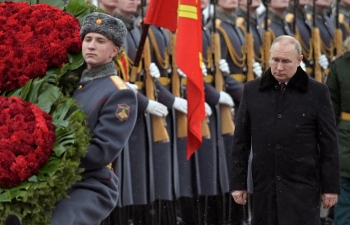 Fact-Check: How Many Russian Soldiers Have Died in Ukraine - Updated Fact-Check: How Many Russian Soldiers Have Died in Ukraine - Updated The Ukraine - Russia War Casualties So Far - There are different information about the number of casualties of Russian soldiers in the battlefield in ... |

